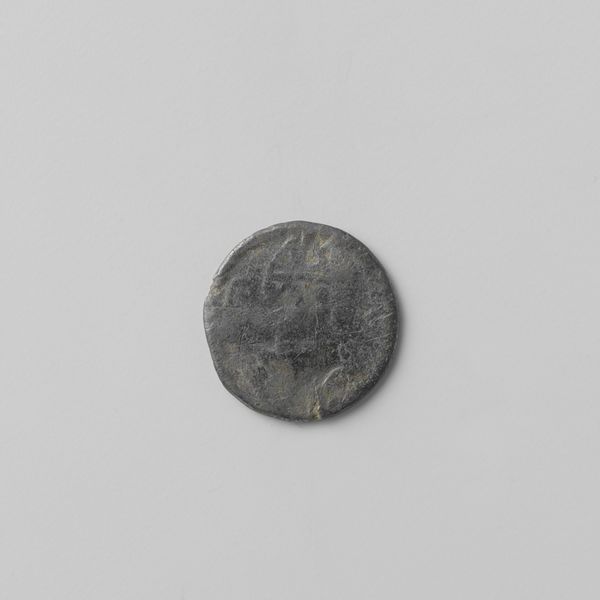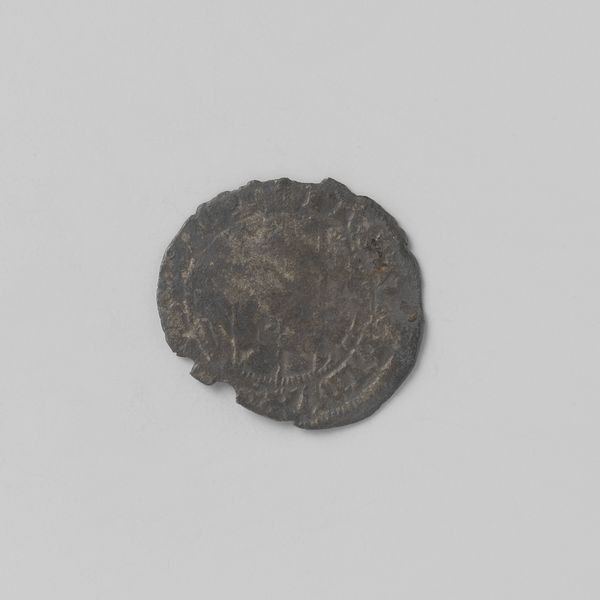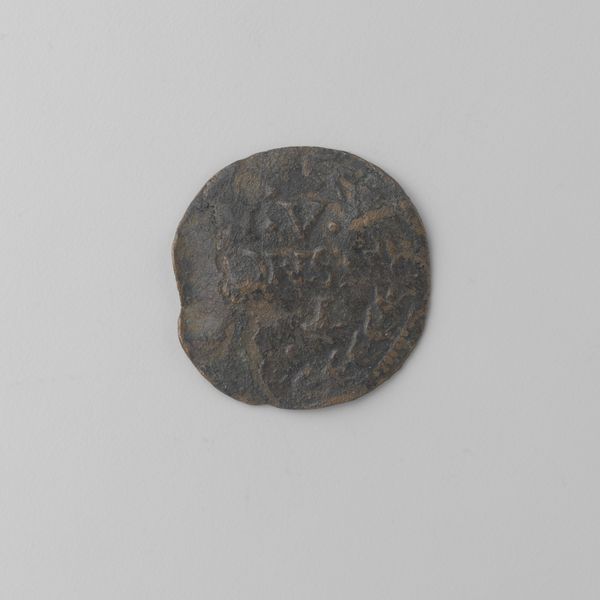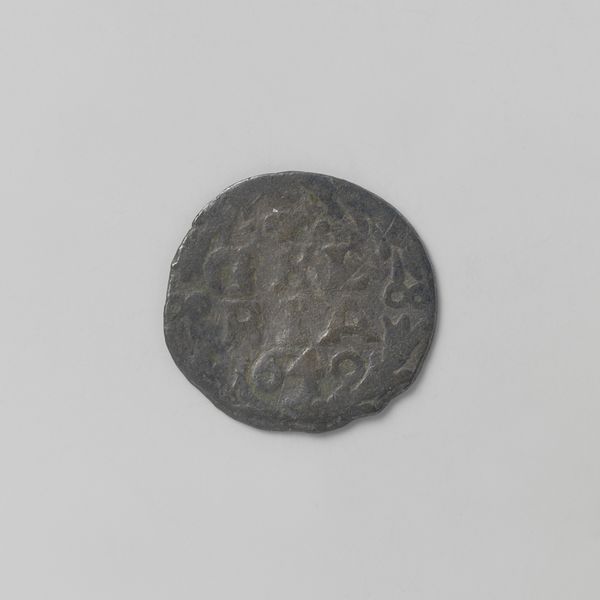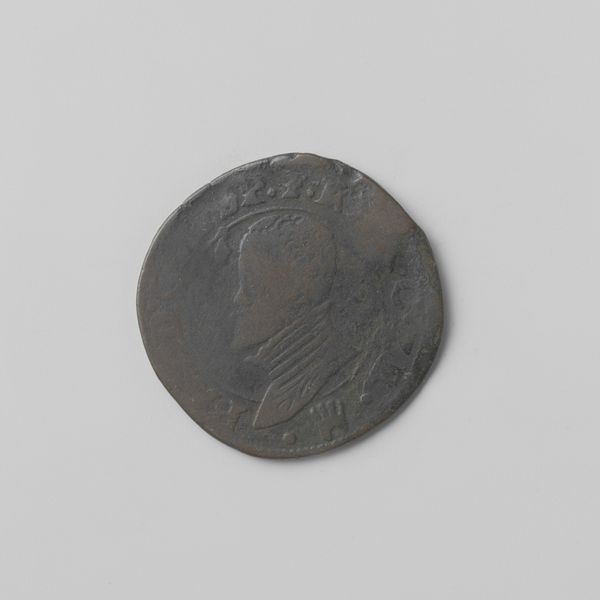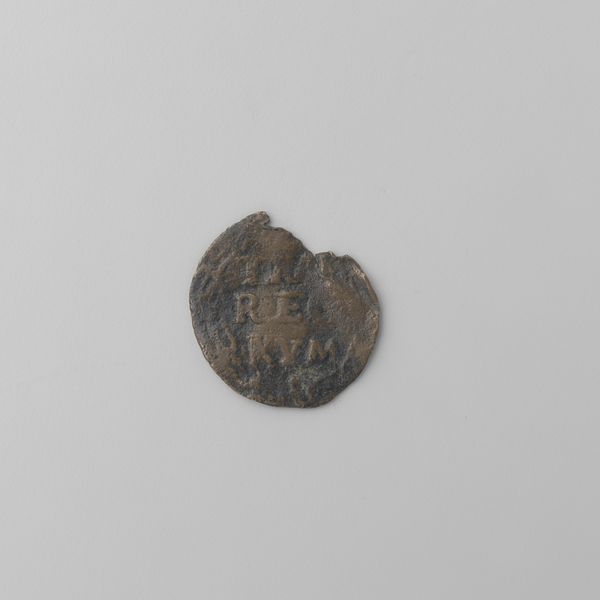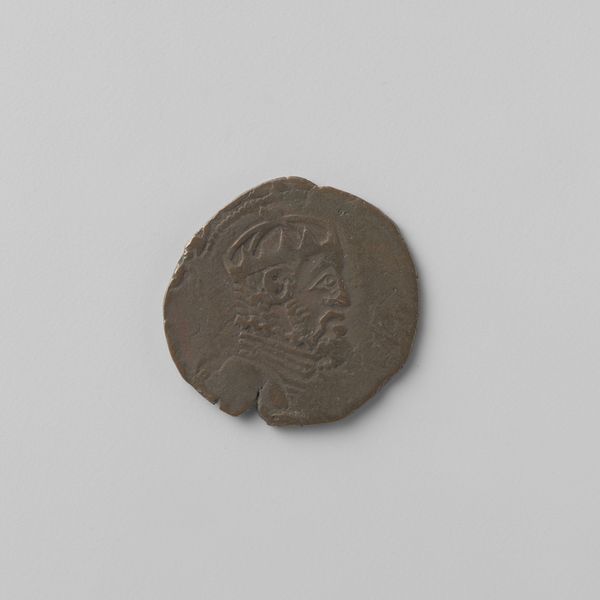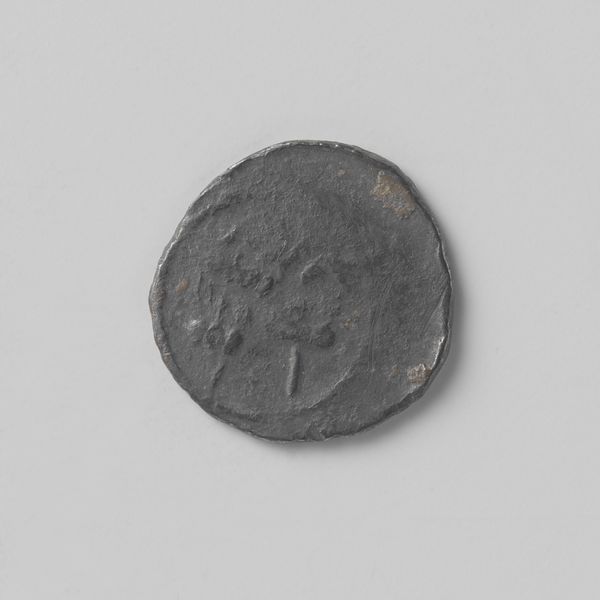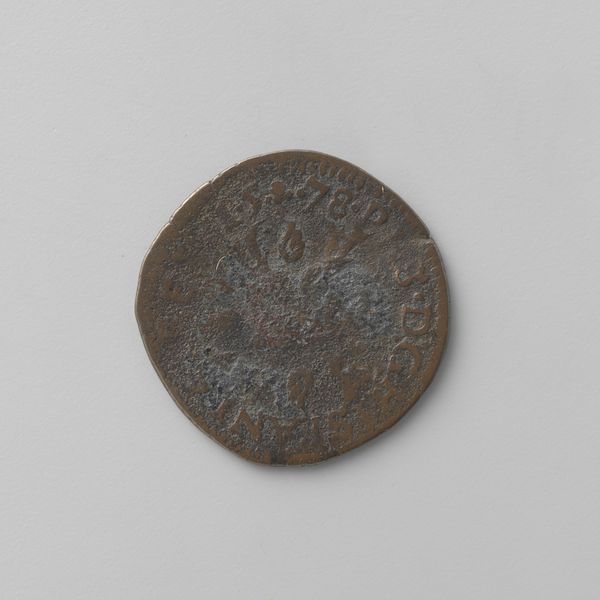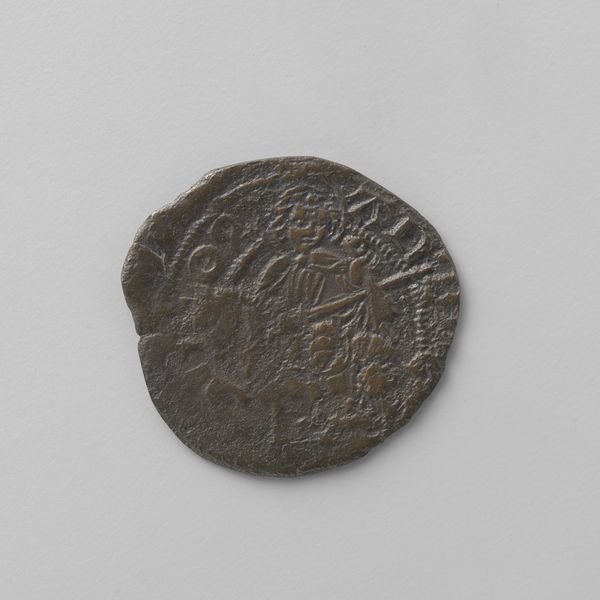
metal
#
portrait
#
metal
#
ancient-mediterranean
Dimensions: diameter 2.0 cm, weight 1.49 gr
Copyright: Rijks Museum: Open Domain
This is a Reckheimse duit, a small copper coin minted in 1620, during the reign of Ferdinand van Aspremont-Lynden. Its modest size belies the complex political landscape of the time. The early 17th century saw a proliferation of small-scale coinages across Europe, reflecting the fragmented political authority of the Holy Roman Empire. Reckheim, a small territory in the Low Countries, was one such entity asserting its right to mint currency. This wasn't just about economics; it was a visual declaration of sovereignty, a challenge to centralized power. The very act of producing this coin, however humble, was a political statement. Understanding this duit requires looking beyond its monetary value. Numismatic collections, historical archives, and studies of early modern European politics are crucial to interpreting its true significance. By examining the social and institutional contexts, we can begin to understand the power dynamics embedded within this small artifact.
Comments
No comments
Be the first to comment and join the conversation on the ultimate creative platform.

